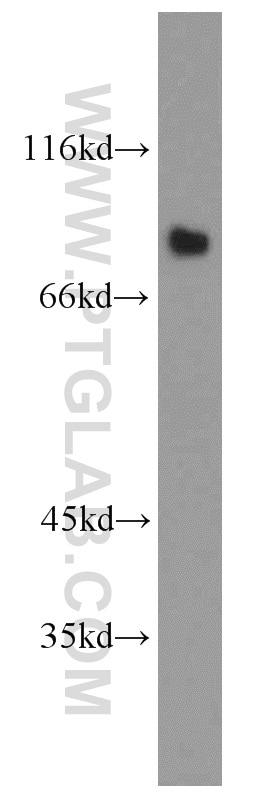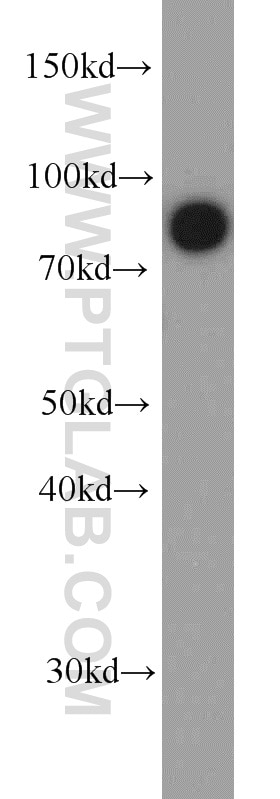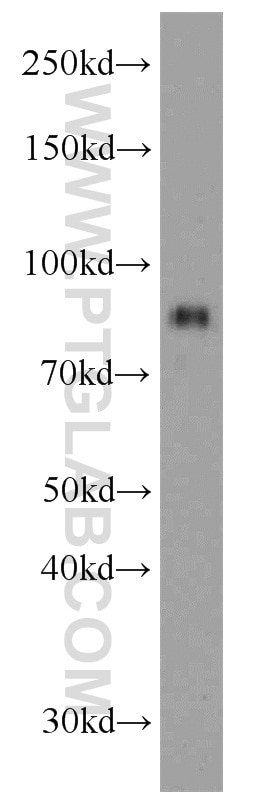Validation Data Gallery
Tested Applications
| Positive WB detected in | mouse brain tissue, rat brain tissue |
Recommended dilution
| Application | Dilution |
|---|---|
| Western Blot (WB) | WB : 1:500-1:2000 |
| It is recommended that this reagent should be titrated in each testing system to obtain optimal results. | |
| Sample-dependent, Check data in validation data gallery. | |
Product Information
19097-1-AP targets LINGO1 in WB, ELISA applications and shows reactivity with human, mouse, rat samples.
| Tested Reactivity | human, mouse, rat |
| Host / Isotype | Rabbit / IgG |
| Class | Polyclonal |
| Type | Antibody |
| Immunogen | LINGO1 fusion protein Ag13553 相同性解析による交差性が予測される生物種 |
| Full Name | leucine rich repeat and Ig domain containing 1 |
| Calculated molecular weight | 70 kDa |
| Observed molecular weight | 83 kDa |
| GenBank accession number | BC011057 |
| Gene Symbol | LINGO1 |
| Gene ID (NCBI) | 84894 |
| RRID | AB_10638484 |
| Conjugate | Unconjugated |
| Form | Liquid |
| Purification Method | Antigen affinity purification |
| UNIPROT ID | Q96FE5 |
| Storage Buffer | PBS with 0.02% sodium azide and 50% glycerol pH 7.3. |
| Storage Conditions | Store at -20°C. Stable for one year after shipment. Aliquoting is unnecessary for -20oC storage. |
Background Information
LINGO-1 is a transmembrane receptor that contains 12 leucine-rich repeats and an immunoglobulin domain. It is expressed primarily in the central nervous system. LINGO-1 binds Nogo-66 receptor (NgR) and p75 and that is a functional component of the NgR/p75 signaling complex (PMID: 14966521). This protein has a calculated molecular weight of 70 kDa and migrates at higher molecular weight due to glycosylation (PMID: 21872576; 25257685; 18326721).
Protocols
| Product Specific Protocols | |
|---|---|
| WB protocol for LINGO1 antibody 19097-1-AP | Download protocol |
| FC protocol for LINGO1 antibody 19097-1-AP | Download protocol |
| Standard Protocols | |
|---|---|
| Click here to view our Standard Protocols |


